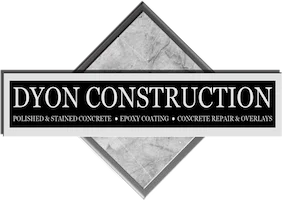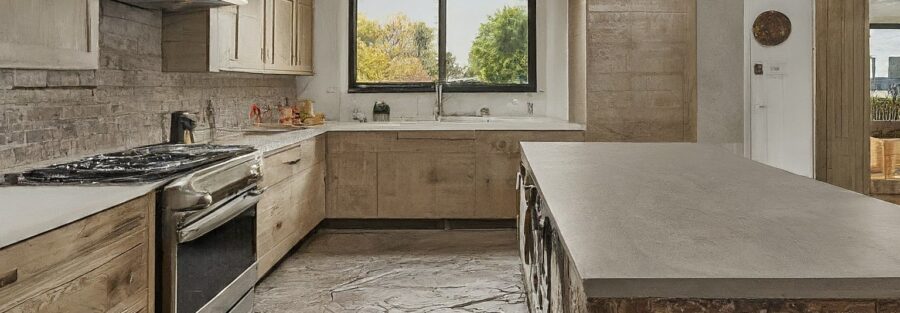In the realm of modern flooring options, homeowners and designers are increasingly drawn to two distinct yet equally appealing choices: tile flooring and stamped concrete. Both options offer aesthetic flexibility and durability, making them popular in residential and commercial spaces alike. However, the decision between the two is not always straightforward. Factors such as cost, maintenance, longevity, and overall design preferences all play a role in determining the best flooring solution for any given space. Understanding the intricacies of both materials is crucial in making an informed choice.
Overview of Tile Flooring
Tile flooring has long been revered for its timeless appeal, offering a variety of materials that cater to different tastes and needs. The most common types of tiles include ceramic, porcelain, and stone, each with its own unique characteristics.
Ceramic tile is perhaps the most widely recognized type. Made from a mixture of clay and other natural materials, it is then fired in a kiln to create a durable surface. Ceramic tiles are generally more affordable than other types and come in a variety of colors and patterns. They are often used in kitchens, bathrooms, and other areas prone to moisture, as they are resistant to water and easy to clean. However, ceramic can be somewhat brittle, meaning it is prone to cracking under heavy impact.
Porcelain tile is a denser, more refined type of ceramic. Its composition includes a higher ratio of finely ground clay, making it more impervious to water and far more resistant to wear and tear. This makes porcelain an ideal choice for high-traffic areas like entryways or commercial spaces. It also withstands temperature fluctuations well, making it suitable for both indoor and outdoor use.
For those seeking a more natural look, stone tile offers an unparalleled, organic aesthetic. From slate and granite to marble and travertine, stone tiles bring a sense of luxury to any space. They are highly durable and resistant to extreme wear, but they do require periodic sealing to protect against stains and moisture. Stone tiles can be expensive, but their longevity and timeless elegance often justify the investment.
Tile flooring, in general, is known for its durability. When properly maintained, it can last for decades, withstanding heavy foot traffic and harsh cleaning products. However, regular maintenance, including grout cleaning and occasional resealing (for stone tiles), is necessary to keep the floor looking its best.
Overview of Stamped Concrete
Stamped concrete, on the other hand, offers a completely different set of design possibilities. It is created by pouring wet concrete into a designated area and then impressing patterns and textures onto the surface before it fully cures. The result is a decorative finish that can mimic the appearance of brick, stone, tile, wood, or even more abstract textures.
One of the key advantages of stamped concrete is its aesthetic versatility. With an array of patterns and colors available, it allows homeowners to achieve the look of expensive materials like stone or slate at a fraction of the cost. Through the use of color hardeners, stains, and concrete dyes, the possibilities for customization are virtually endless. This makes stamped concrete an excellent choice for outdoor patios, driveways, walkways, and even interior flooring in some modern homes.
Stamped concrete also offers a seamless finish, which eliminates grout lines or joints that can collect dirt and moisture over time. This makes cleaning and maintenance relatively straightforward compared to other flooring options. The smooth, continuous surface of stamped concrete can contribute to a sleek, modern look that is especially appealing in contemporary spaces.
However, stamped concrete is not without its limitations. While it is durable, it is more susceptible to cracking than tile due to its expansive nature. Proper installation, including the use of control joints and reinforcement, is critical to minimizing the risk of cracking. Additionally, stamped concrete can become slippery when wet, particularly if a high-gloss sealer is used, so it may not be the best choice for areas prone to moisture, such as pool decks or indoor bathrooms.
Cost and Durability Comparison
When comparing the costs of tile flooring and stamped concrete, there are a few key factors to consider, including installation costs, long-term maintenance, and overall durability.
Tile flooring tends to be more labor-intensive during installation, particularly if intricate patterns or designs are being used. The cost of tiles themselves can vary greatly depending on the material chosen—ceramic and porcelain tiles are generally more affordable, while stone tiles can be quite expensive. Labor costs for tile installation can also add up, as the process involves cutting, fitting, and grouting individual tiles.
Once installed, tile flooring requires minimal maintenance aside from regular cleaning and grout upkeep. Ceramic and porcelain tiles are particularly easy to maintain, requiring little more than a damp mop and occasional grout sealing. Stone tiles, while more demanding, can last for decades if properly maintained, making the initial investment worthwhile in the long run.
Stamped concrete is typically less expensive than tile when it comes to material and installation costs, especially for large outdoor areas like patios or driveways. The ability to mimic more expensive materials, such as natural stone or pavers, at a fraction of the cost makes stamped concrete an appealing option for budget-conscious homeowners.
In terms of durability, stamped concrete holds up well under most conditions, but it is more susceptible to cracking than tile, particularly if the ground beneath it shifts or if it is exposed to extreme weather conditions. Stamped concrete may require periodic sealing to protect the surface from moisture and stains, especially in outdoor environments. However, with proper care, it can last for many years without significant deterioration.
For high-traffic areas, both tile and stamped concrete perform admirably. Porcelain and stone tiles are especially resistant to wear, making them suitable for commercial spaces or areas of the home that see a lot of foot traffic. Stamped concrete, when properly installed and sealed, can also withstand heavy use, but it may require more frequent maintenance to prevent cracking or surface damage.
Choosing between tile flooring and stamped concrete depends largely on the specific needs of the space, aesthetic preferences, and budget constraints. Tile flooring, particularly porcelain and stone, offers unparalleled durability, a wide range of design options, and relatively low maintenance. It is an excellent choice for both indoor and outdoor spaces where moisture resistance, longevity, and elegance are paramount.
Stamped concrete, on the other hand, excels in its ability to deliver the look of high-end materials at a fraction of the cost. Its seamless, customizable design makes it an ideal option for large outdoor areas, patios, or driveways, where its durability and aesthetic versatility can truly shine. However, stamped concrete does require regular upkeep and may not be the best option for areas that experience significant moisture or shifting ground conditions.
Ultimately, the decision comes down to the environment in which the flooring will be used, the desired look, and the willingness to invest in long-term maintenance. For those seeking a classic, high-end finish with minimal upkeep, tile flooring is likely the best option. For homeowners looking to make a bold statement with a more cost-effective solution, stamped concrete may be the perfect fit.

